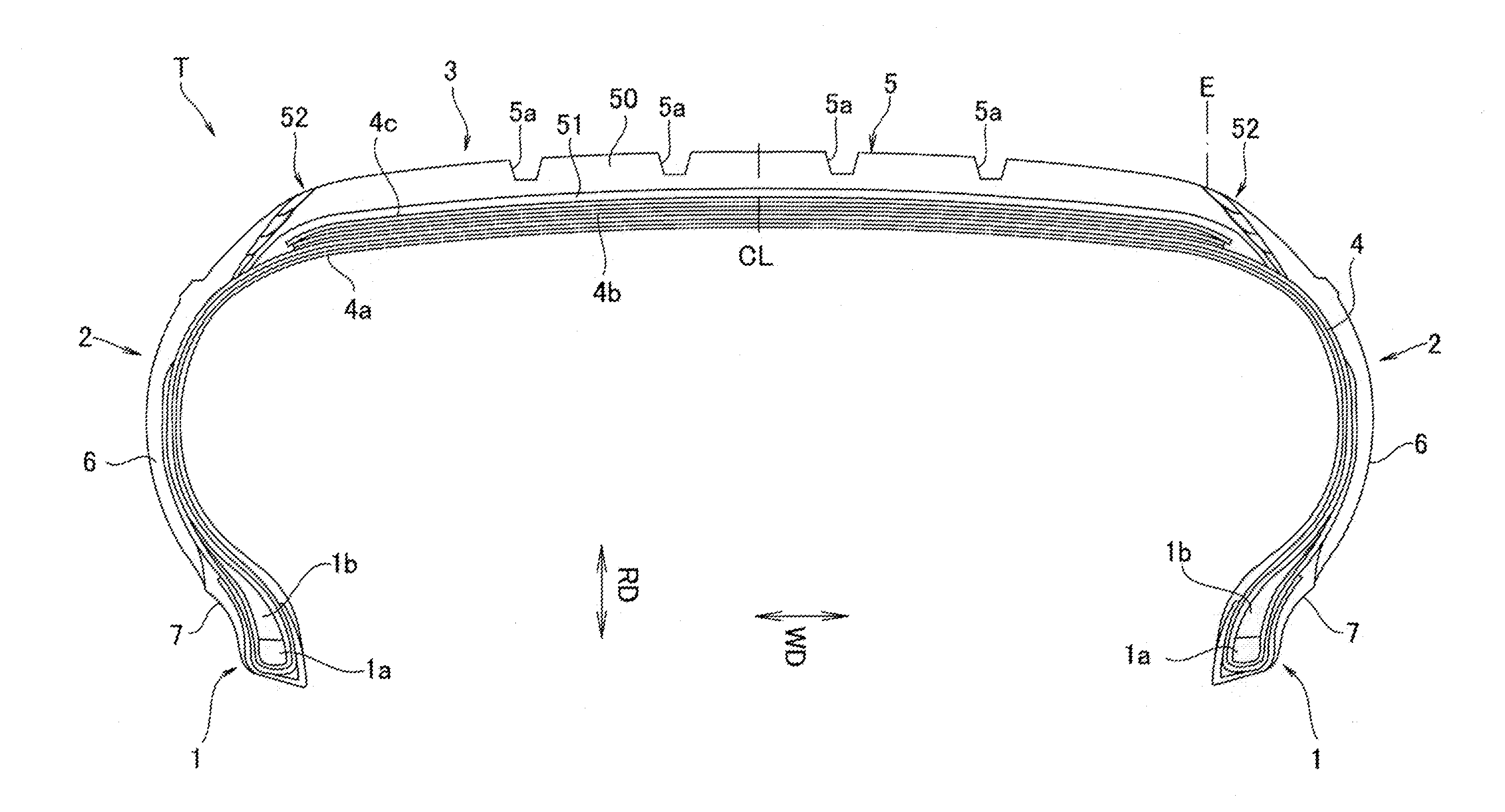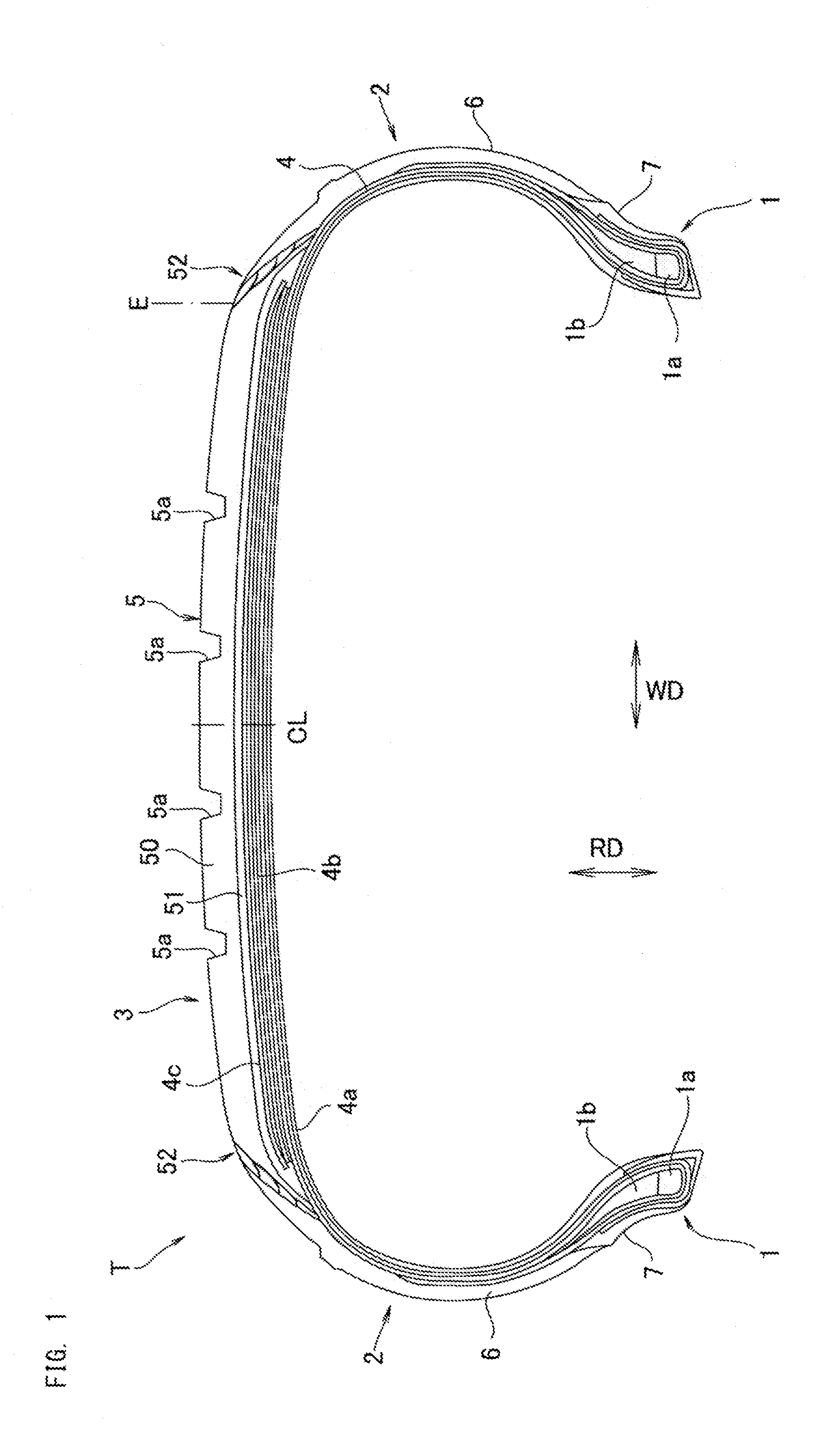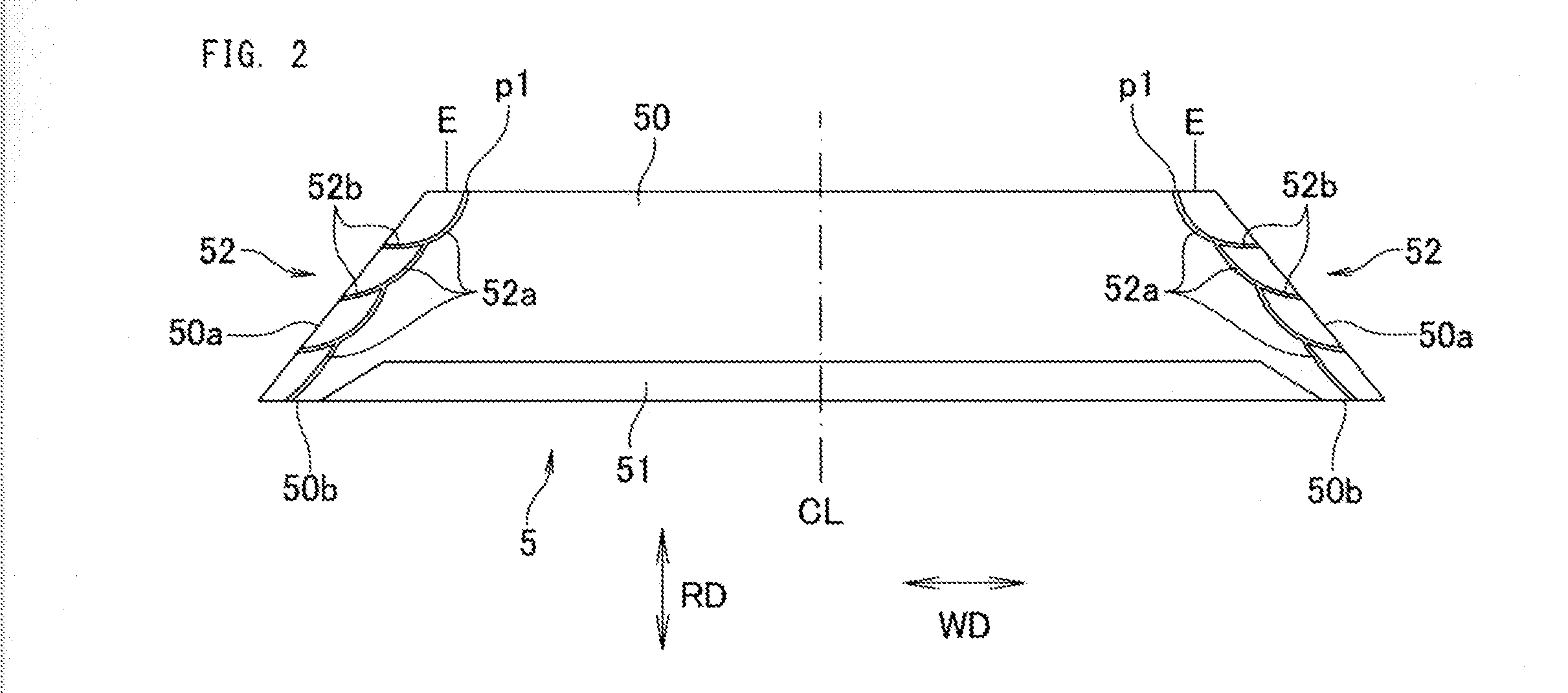Pneumatic tire
a technology of pneumatic tires and pneumatic cylinders, which is applied in the direction of rolling resistance optimization, special tyres, vehicle components, etc., can solve the problems of reducing and affecting the service life of pneumatic tires. , to achieve the effect of suppressing the volume of conductive rubber, reducing uneven wear, and improving crack resistan
- Summary
- Abstract
- Description
- Claims
- Application Information
AI Technical Summary
Benefits of technology
Problems solved by technology
Method used
Image
Examples
example 1
[0062]In relation to the tire according to the comparative example 1, the conductive part 52 was provided in the inner portions of both lateral wall sites of the cap part 50. The rubber hardness of the conductive part 52 was set to be lower than the rubber hardness of the cap part 50. The rest was set to the same as the tire according to the comparative example 1.
example 2
[0063]The conductive part 52 was provided only in the lateral end part in the inner side of the vehicle body among a pair of lateral end parts in both sides of the cap part 50 in the tire width direction WD. The rest was set to the same as the example 1.
example 3
[0064]The rubber hardness of the conductive part 52 was made higher than the rubber hardness of the cap part 50. The rest was set to the same as the example 1.
TABLE 1RubberHardnessLowHighhardnessofElectricfrequencyfrequencyPosition ofof conductiveresistanceRollingnoisenoiseUnevenCrackconductive partcap partrubber(MΩ)resistanceLFVlevellevelwearresistanceComparativeSurface of65563100100100100100100Example 1lateral end part of cap partBoth lateral endpartsExample 1Inner portion of6556310210510598105110lateral end part of cap partBoth lateral endpartsExample 2Inner portion of655631031001039998105lateral end part of cap partOnly one lateralend part (innerside of vehiclebody)Example 3Inner portion of5665310310598105105110lateral end part of cap partBoth lateral endparts
[0065]From Table 1, it is understood that the rolling resistance is effectively reduced in the examples 1 to 3 in comparison with the comparative example 1.
[0066]With regard to the current-applying performance, it is unders...
PUM
 Login to View More
Login to View More Abstract
Description
Claims
Application Information
 Login to View More
Login to View More - R&D
- Intellectual Property
- Life Sciences
- Materials
- Tech Scout
- Unparalleled Data Quality
- Higher Quality Content
- 60% Fewer Hallucinations
Browse by: Latest US Patents, China's latest patents, Technical Efficacy Thesaurus, Application Domain, Technology Topic, Popular Technical Reports.
© 2025 PatSnap. All rights reserved.Legal|Privacy policy|Modern Slavery Act Transparency Statement|Sitemap|About US| Contact US: help@patsnap.com



